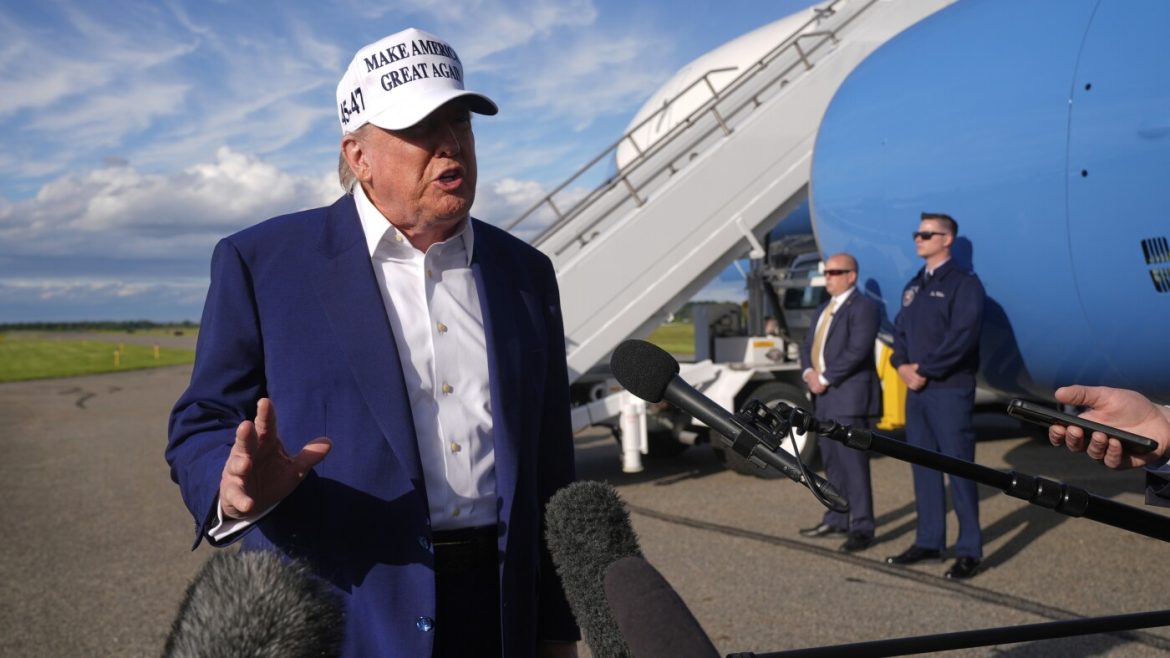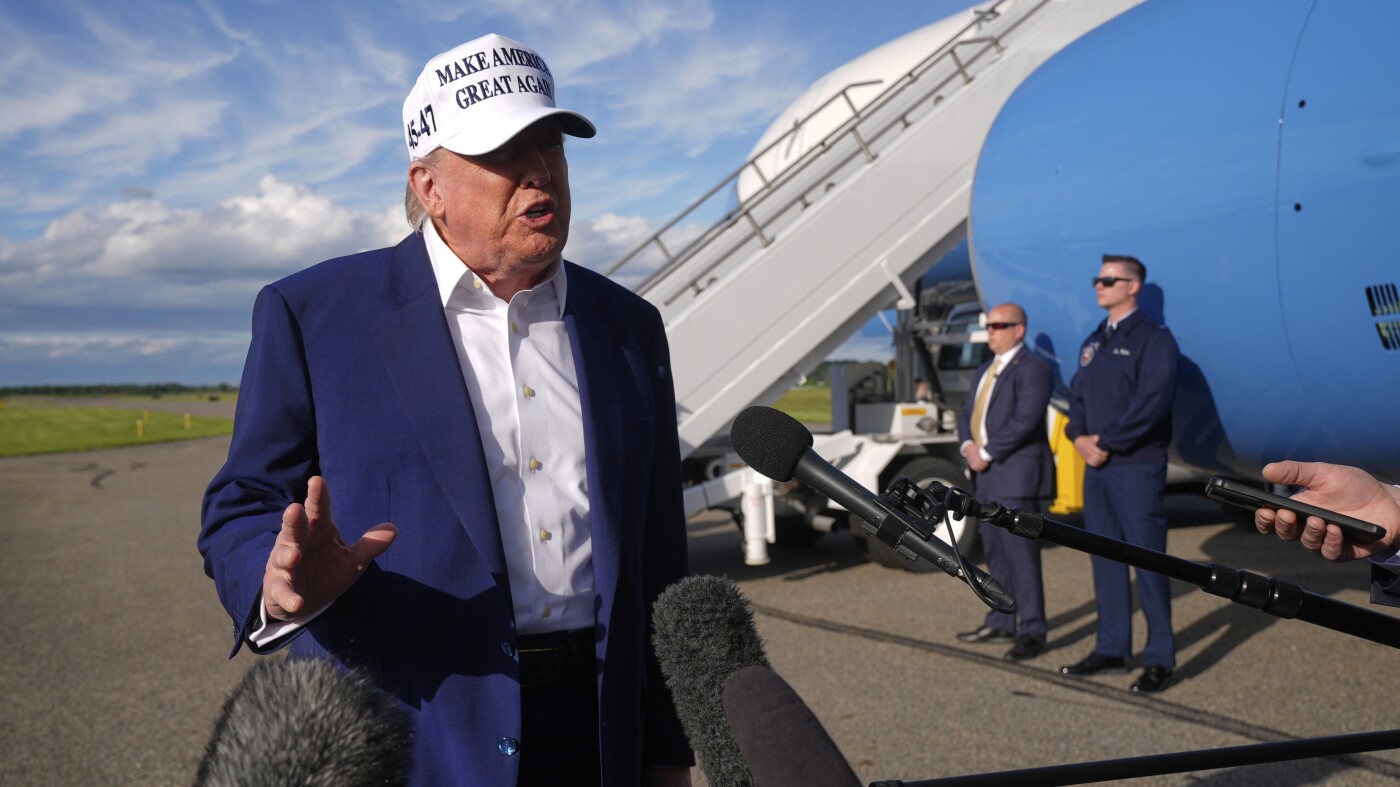The Postponement of Trump’s Threatened 50% Tariff on the European Union: An In-Depth Analysis
Introduction: Navigating Trade Tensions
Recently, former President Donald Trump announced a delay in the implementation of a threatened 50% tariff on imports from the European Union (EU). Originally set to begin on June 1, this significant escalation in trade policy will now be postponed until July 9, 2025. This development emerges amid ongoing tensions and negotiations in foreign trade and underscores the complex interplay between economic strategy and international diplomacy.
This report unpacks the details surrounding the tariff delay, explores potential motivations behind the decision, assesses the implications for economic relations between the U.S. and the EU, and considers the broader context of trade policy.
The Announcement: Delay and Its Nuances
Multiple recent statements from Trump, including posts on Truth Social and remarks to reporters, confirm that he personally agreed to extend the deadline for imposing the 50% tariff on EU goods until July 9, 2025. The tariff, if enacted, would have marked a substantial increase in import taxes, potentially escalating trade tensions further.
Further, alongside the EU-wide tariff threat, Trump also mentioned a 25% tariff on Apple products, adding a layer of complexity to the trade standoff—particularly in regard to demands that iPhones be manufactured domestically in the U.S.
The postponement suggests a strategic choice to allow additional time for negotiation or leverage, demonstrating that the tariff threat remains a tool for pressure rather than an immediate imposition.
Background: The Stakes of the Tariff Threat
The proposed tariff represents a dramatic protectionist move that could reshape trade flows. A 50% tariff on EU goods would have broad ramifications, imposing higher costs on imports ranging from automobiles to industrial equipment. This would ripple through supply chains and consumer prices, potentially provoking retaliatory measures from the EU.
Moreover, the tariff aligns with longstanding criticisms from Trump’s camp regarding trade imbalances and manufacturing offshoring. The 25% tariff on Apple products specifically targets assembly and manufacturing practices, reflecting an objective of boosting domestic production.
However, such trade actions come at the risk of straining diplomatic relations and disrupting established economic partnerships. Delaying the tariff implementation may serve to avert immediate disruption while maintaining negotiating pressure.
Possible Motivations for the Delay
Several strategic motivations could underlie the decision to delay:
– Negotiation Window: Extending the deadline buys time for U.S. negotiators and EU counterparts to engage in talks that might reduce or eliminate the need for tariffs.
– Economic Considerations: Immediate tariff imposition could unsettle markets or supply chains, which might conflict with broader economic goals or ongoing political calculations.
– Political Signaling: By publicly agreeing to the delay, Trump signals willingness to negotiate but retains leverage through the looming threat.
– External Factors: Global or domestic developments, including upcoming elections or international summits, might influence timing.
The explicit mention by Trump that it was his “privilege” to agree to the extension suggests an intent to present the delay as a positive, cooperative gesture rather than a retreat.
Implications for U.S.-EU Relations
This tariff postponement offers a temporary reprieve for transatlantic trade relations, allowing space to pursue diplomacy rather than immediate confrontation. The delay may foster an environment conducive to dialogue over contentious issues, such as subsidies, regulatory standards, and intellectual property rights.
Yet, the underlying tensions remain. The original tariff threat underscores persistent grievances and the potential for abrupt policy shifts. Businesses and investors face continued uncertainty, balancing preparedness for protectionist measures with hopes for resolution.
The move also underscores the increasingly transactional nature of trade policymaking under Trump’s influence, where threats serve as bargaining chips.
Broader Context: Trade Policy and Global Economics
Trump’s tariff approach reflects a broader trend toward economic nationalism and bilateralism, contrasting with multilateral trade agreements. This approach prioritizes perceived domestic interests and manufacturing revitalization but risks fracturing the global trade system.
Delaying the tariff is consistent with a calibrated use of trade policy as leverage while maintaining strategic flexibility. It also highlights the complex balancing act between enforcing tough trade stances and managing the risks of economic fallout.
Observers should watch for:
– How the EU responds during the delay period.
– Whether negotiations lead to tariff avoidance or further escalation.
– The impact on associated global markets and supply chains.
Conclusion: A Tactical Pause in a High-Stakes Trade Chess Game
The decision to postpone the threatened 50% tariff on EU goods until July 9, 2025, represents a significant but cautious step in the evolving saga of U.S.-EU trade relations. It reflects an effort to maintain pressure while preserving the possibility of negotiation—a tactical pause in a high-stakes trade chess game.
How this period unfolds will shape economic ties, inform future policy directions, and signal the extent to which protectionist impulses can be balanced with cooperative approaches. For stakeholders on all sides, vigilance and adaptability will be essential as negotiations progress and the July deadline approaches.


